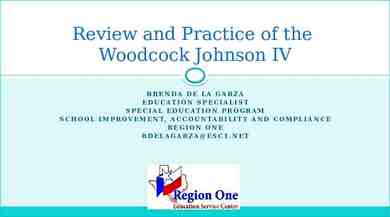Please stand by! The webinar will begin shortly. 1 2 Join
66 Slides1.75 MB

Please stand by! The webinar will begin shortly. 1 2 Join the conference call by dialing the conference number in your Invitation or Reminder Emails. Please put your phone on mute. Be sure to have all Session 3 materials ready before the session starts. You’ll find the link to the materials in your Invitation or Reminder Emails.

Session 3 Overview Take-Home Activity Debrief Module 2—Records Emergency Response and Recovery – Lesson 1: Assessing the Damage to Records – Lesson 2: Developing the Response – Lesson 3: Implementing the Response Slide 3-2

Take-Home Activity Debrief Test a REAP and Develop Your REAP’s Table of Contents Handout 2.8—Test the REAP Worksheet Handout 2.8—Develop Your REAP’s Table of Contents Worksheet Slide 3-3

Module 2—Records Emergency Response and Recovery Introduction and Objectives Slide 3-4

How Bad Can It Get? Photo courtesy of CoSA/David Carmicheal—Damaged legal files, Beauvoir, MS Slide 3-5

How Bad Can It Get? (cont’d.) Photo courtesy of CoSA/Christine Wiseman—Historic photographs— Mississippi, post-Hurricane Katrina Slide 3-6

How Bad Can It Get? (cont’d.) Photo courtesy of CoSA—Office records and computers damaged by arson Slide 3-7

How Bad Can It Get? (cont’d.) Flood in Oneonta, NY Photo courtesy of Mario R. Arevalo, Oneonta (NY) City Assessor Slide 3-8

How Bad Can It Get? (cont’d.) Photo courtesy of CoSA/Karl Niederer—Moldy indexes to case files— Orleans Parish Criminal District Court Slide 3-9

Review of Key Terms Response – Actions taken to limit the damage and to prepare to recover records Recovery – Actions taken to return records to use and to resume operations Slide 3-10

Six Keys to Successful Response and Recovery 1. A detailed REAP 2. Committed management 3. Educated and trained staff 4. Timely initial response 5. Effective communication 6. Quick, informed decisions Slide 3-11

Immediate Response is Necessary When: – Human safety is put at high risk – Information and/or records will be lost if immediate action is not taken Photo courtesy of NARA—New Orleans— post-Hurricane Katrina—2005—Contractor response Slide 3-12

Preventing Collateral Damage Emergencies can occur which may not directly affect records, but which require response planning to minimize collateral risks to the holdings. Slide 3-13

If You Have Advance Warning Notify staff of the number to call for information on reporting for duty. Tell appropriate staff members where an Emergency Operations Center will be set up. Distribute beepers or pagers to key staff. Ensure that emergency personnel have a copy of the REAP accessible. Prepare the facility. Slide 3-14

Module 2 Objectives At the completion of this module, you will be able to: – Assess damage to records after an emergency – Define the Assessment Team roles and responsibilities – Develop a response plan for records damaged in an emergency – Describe the health, safety, security, and privacy issues that should be addressed during a response – Determine when and how to work with private vendors – Discuss response procedures for records in all media Slide 3-15

Module 2—Records Emergency Response and Recovery Lesson 1: Assessing the Damage to Records Slide 3-16

Assess the Nature and Severity of the Damage Now’s the time to use your: – – – – PReP Phone Tree Initial Damage Assessment and Response Checklist REAP The scale of your response depends on the answers to these questions: – – – – How many staff do you have available? Do you have appropriate staff available? How many records are affected? Is this too large or complicated for you to handle? Slide 3-17

Small-Scale Incident Can recover using in-house resources Within timeframe that does not put records at increased risk for mold With resources and expertise at hand Photo courtesy of NARA—NARA’s Washington National Records Center—2005 Slide 3-18

Medium-Scale Incident Need to reassign staff Need a structure and response plan May need limited outside expertise or contracted resources Photo courtesy of NARA—Suitland fire—2000 Slide 3-19

Large-Scale Incident Affects all staff and the long-term mission of the agency Requires extensive resources and use of contractors, including labor, beyond those available in the agency Photo courtesy of NARA—Gulfport SBA and Court—2005 Slide 3-20

Initial Coordination Be prepared to communicate concerns and priorities about records affected by the emergency. – – – – Confidential records or information require extra security. Essential records should be recovered first. Permanent records also have high priority. Photos, maps, and electronic and other special media require special handling. Slide 3-21

Initial Coordination Meeting with Assessment Team Assemble the Assessment Team as quickly as possible. Perform an initial damage assessment. Begin setting up an Emergency Operations Center. Slide 3-22

Assessment Team Roles and Responsibilities Assessment Team consists of the people knowledgeable about the facility, the emergency response, and the records involved. When establishing the Assessment Team: – Detail specific responsibilities. – Outline clear lines of authority. – Remember that one person may play more than one role. Slide 3-23

Assessment Team Roles and Responsibilities (cont’d.) Action Team Headed by: Records Response and Recovery Manager Assessment Team Headed by: Assessment Coordinator Response Team Headed by: Response Coordinator Members include: Facility Service Manager Records Specialists Preservation Specialists Slide 3-24

Carry Out the Assessment of the Damage to Location and Space, Then to Physical Records First assess damage to the location and space. Then assess damage to the physical records. Base your response on the priorities set forth in your REAP. Photo courtesy of NARA—Orleans Parish, Hurricane Katrina—2005 Slide 3-25

Entering the Area Where the Damage Has Occurred Safety is your first concern: – Do not enter until the location has been declared safe. – Ensure that structural and contamination hazards have been corrected. – Ensure that the location is secured and establish a security entry checkpoint. Photo courtesy of NARA—Orleans Parish, Hurricane Katrina—2005 Slide 3-26

Use All Five Senses If you smell gas, or hear a blowing or hissing noise: – Leave the building or area immediately. Watch for extension cords or other electrical wires touching water. – Avoid the area. Listen and look for sparks. Look for broken or frayed wires. Be alert for the smell of burning insulation. Slide 3-27

Safety—Use Common Sense! Be responsible for your own safety and health. – Remain calm. – Always work in pairs. – Wear protective clothing or gear at all times. – Carry a respirator or dust mask. Photo courtesy NARA—NARA staff—Orleans Parish, post-Hurricane Katrina—2005 Slide 3-28

Document the Volume and Extent of Damage Document all types of damage present. Do not move objects or records without first documenting their condition. Photograph or videotape the conditions of records and structures. – Record identifying information: location, time, damage, etc. Slide 3-29

What Does the Photograph Tell You? Photo courtesy of NARA—Hurricane Katrina—Orleans Parish—2005 Slide 3-30

What Does the Photograph Tell You? Photo courtesy of NARA—Suitland fire—2000 Slide 3-31

Identify Which Records Are Affected For the records that have been damaged, identify: – – – – – – Record types The finding aid or database Easily replaced records Formats The damage Records that require additional expertise and/or expense to recover, or for which there are special recovery concerns Slide 3-32

Determine Response and Recovery Priorities for Damaged Records Use your Records Priorities list from your REAP. Response and recovery priorities are normally based on: – – – – – Value of the information Intrinsic value of the record Vulnerability of the media Frequency of use Severity of damage Slide 3-33

Communicate Your Findings Communicate your findings to: – Senior management – All relevant custodians and owners – IT staff (for electronic records and systems) Include information about: – Which records are affected and their current condition – The impact on the continuity of operations – Decisions regarding recovery priorities and techniques Slide 3-34

Module 2—Records Emergency Response and Recovery Lesson 2: Developing the Response Slide 3-35

Transferring Authority from the Assessment Team to the Response Team Once the assessment is complete, it’s time to transfer authority from the Assessment Team to the Response Team. Decisions to be made by the Response Team: – Priorities for response – Recovery techniques to be used for each type of record – Resources to be used Slide 3-36

Transferring Authority from the Assessment Team to the Response Team (cont’d.) Use the REAP to determine the following response plan elements: – – – – – – – Staffing Location of the Emergency Operations Center Supply chain Location of the staging area and any recovery areas needed Any contractor contacts Priorities for response Procedures for handling sensitive or confidential records Slide 3-37

Response Team Roles and Responsibilities Response Team members may be responsible for: – – – – – – – – Separating records Moving records Packing records Drying material Maintaining tracking logs Maintaining documentation of records Labeling records Labeling or relabeling boxes Slide 3-38

Members of the Response Team Action Team Headed by: Records Response and Recovery Manager Assessment Team Headed by: Assessment Coordinator Response Team Headed by: Response Coordinator Members include: Response Recorder Archivists Conservators Slide 3-39

Definition of an Incident That Can Be Handled In-House Small area Few records Clean water Photo courtesy of NARA—NARA’s Washington National Records Center—2005 Slide 3-40

Definition of an Incident That Will Require External Resources and/or Contractors Large-scale incident Large volume of records Extensive and serious damage Records on special media and formats Photo courtesy of NARA—Hurricane Katrina—Orleans Parish—2005 Slide 3-41

Plan for Staffing the Response and Recovery Stages The nature, severity, and extent of the incident will determine the make-up of the Response Team. Photo courtesy of NARA Slide 3-42

Staffing: Small-Scale Incidents May be handled quickly by a small group of people May involve only administration, records staff, facilities, IT, and purchasing Slide 3-43

Staffing: Large-Scale Incidents Response Coordinator Representative of senior management Public Relations Officer or Media Liaison Facility Manager and/or Building Engineer Chief Security Officer Personnel Manager and Health and Safety Officer Archivists and Records Managers Conservators and preservation specialists Assessment and Response Recorders IT Manager Chief Financial Manager and/or Procurement Officer Slide 3-44

Determine Response Priorities Use the salvage priorities specified in your REAP. As a general rule, recover essential and valuable records first. The Response Team must also be concerned with all records at the damage site. Photo courtesy of NARA—Response Team pack-out after fire— Suitland, MD Slide 3-45

Set Up the Emergency Operations Center Identify one or more areas on site that can serve as a Emergency Operations Center and/or area for response operations. Make sure communication equipment is available. Designate a spokesperson. Photo courtesy of FEMA/Ed Edahl Slide 3-46

Activate the Notification System Follow the procedures in the REAP’s Communication Plan. If communication systems are working: – – – – Notify the Action Team members. Inform them of the nature of the emergency. Decide which members of their teams they should summon. If you cannot reach an Action Team member, contact his or her alternate. Slide 3-47

Activate the Notification System (cont’d.) If communication systems are not working: – Attempt to reach the Action Team and all staff through an announcement on a local AM radio station. – Try email and cell phones. Slide 3-48

Meet On Site Review procedures with team leaders. Inform them of the priorities and arrangements made by the emergency on-site coordinator. Make staff assignments. Decide how many staff members you will need to mobilize. Slide 3-49

Plan for Supply and Equipment Deployment or Purchase Use the Supplies section of your REAP. Determine the supplies and equipment you will need. – What do you have on hand? – What do you need to purchase? Photo courtesy of NARA Slide 3-50

Plan the Record Tracking System All records moved from an affected area need to be tracked to ensure they are: – Accounted for throughout response and recovery – Returned to proper locations Track records even in small-scale incidents. Develop codes and labels. Photo courtesy of NARA—Washington National Records Center (WNRC)—2006 Slide 3-51

Plan for Contractor Response Prepare the Contract Task Order and Deliverables. – Describe the incident. – Contract specifications (examples) Contractor’s contact person Work to be performed Deliverables Criteria for assessing performance Time for completion Security requirements Itemized cost estimates Agency’s contract administrator Agency responsibilities under the contract Slide 3-52

Contractor Services and Equipment Examples include: – Dehumidification – Freezer and cold storage – Sanitization and decontamination – Mold remediation – Media recovery Photo courtesy of NARA—Suitland—Munters’ Moisture Control providing building dehumidification—2000 Slide 3-53

Deliverable(s) for Records Emergency Response and Recovery Task Order Examples include: – – – – – – – Facility stabilization Rehousing and relabeling Retrieving, packing, and transporting damaged records Vacuum freeze drying water-damaged records Sanitizing, decontaminating, and/or cleaning Recovery of special formats Reformatting damaged records Slide 3-54

Document Your Response Plan Document the decisions and plans you’ve made while planning your response. Slide 3-55

Module 2—Records Emergency Response and Recovery Lesson 3: Implementing the Response Slide 3-56

First Priority—Personal Health and Safety During Response Personal protection equipment Personal hygiene Prevention of dehydration, exhaustion, and injury Decontamination procedures Photo courtesy of NARA Slide 3-57

Working With Mold and Other Contaminants Molds, bacteria, and other contaminants can have an adverse effect on people. Mold is the most common contaminant in water-based emergencies. When working with moldy records wear protective gear. Photo courtesy of NARA—Using a fume hood, NARA conservator removes mold from dried record Slide 3-58

Second Priority—Security and Privacy Security – – – – – Allow only authorized people in affected areas. Use a tracking system. Process damaged records in secure areas. Never leave records unsupervised or in an insecure location. Try to maintain at least the same level of security as existed before the incident. Slide 3-59

Second Priority—Security and Privacy (cont’d.) Privacy – Clearly mark containers holding confidential records well in advance of an incident. – Recovery personnel and contractors should: Sign an agreement not to disclose confidential information Be trained on handling confidential records – If possible: Recruit staff from agencies that created the confidential records. Do not open containers containing confidential records unless the creating agency staff is in attendance. Slide 3-60

Initial Action Steps—Within the First 48 Hours There are several actions you can take within the first 48 hours to mitigate the damage to records. “48 hours” is a rule of thumb—many damaged records can survive far longer than 48 hours. Slide 3-61

Session 3 Review and Wrap-Up Assess the nature and severity of the damage. Conduct initial coordination with your Assessment Team. – Assessment Team roles and responsibilities – Tips for performing the damage assessment Document damage to records. Communicate your findings. Develop your response plan. Implement your response. Slide 3-62

Resources for Help IPER Resource Center: http://www.statearchivists.org/resource-center/iper – – – – – – Federal agencies and programs State agencies and programs Non-governmental agencies Regional conservation centers Commercial vendors Response and recovery procedures for each region, state, or locale Slide 3-63

Activity Develop Your REAP—Decision Maker, Site Assessment, Goals and Timetables, or Action Team Slide 3-64

Materials for the Activity Handout 3.5 Slide 3-65

Thank You!






